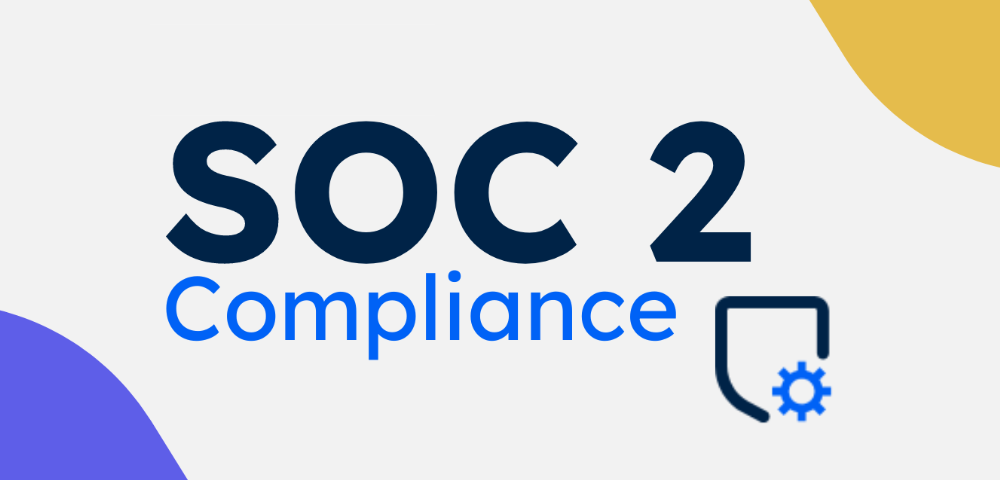From the Trenches: What I’ve Learned About SOC Compliance and Why You Need to Get It Right

I’ve been in the tech world for a while now. More specifically, I’ve spent years working with companies to navigate the often murky waters of SOC compliance. If you’re unfamiliar with what SOC is, let me break it down for you. SOC stands for System and Organization Controls, and it’s a framework that businesses use to ensure they’re meeting the right standards for data security, privacy, and reliability. There’s a lot to it, and it’s not something you can just wing.
Now, I’ve seen it all. The good, the bad, and the downright ugly when it comes to SOC compliance. And let me tell you, getting it right is no small feat. I’ve been called in to help countless companies—some just starting out, some large enterprises that should have had this figured out a while ago—and honestly, no two cases are the same. However, there are a few lessons I’ve learned that I believe can save you a lot of headaches as you dive into this process.
1. Understand What SOC Compliance Actually Is
SOC compliance isn’t just a technicality—it’s a big deal. I can’t tell you how many times I’ve walked into a meeting where everyone is nodding, pretending to understand what SOC actually stands for and what it requires. Trust me, I’ve seen this a lot, and it’s not pretty when that misunderstanding comes to light later in the process.
SOC reports—like SOC 1, SOC 2, and SOC 3—are the industry’s way of verifying that your company has the right internal controls and security measures in place to handle sensitive data. SOC 1 focuses on financial reporting, SOC 2 is about data security, availability, confidentiality, and privacy, and SOC 3 is essentially a high-level overview of your controls and processes for public consumption.
You need to be crystal clear about which SOC compliance report your organization needs and why. You might be wondering, “Do I need SOC 2, or is SOC 3 enough?” Well, the answer depends on your business. If you’re handling sensitive data—like personal information or financial data—SOC 2 is typically your best bet. If you’re in a more public-facing industry where you want to showcase your commitment to security without getting too detailed, then SOC 3 might do the trick. But, always consult with someone who really understands the nuances before deciding.
2. Be Prepared for a Time-Consuming Process
SOC compliance is no walk in the park. Sure, I’ve seen companies breeze through the process with their systems and controls already in top shape. But those are the exceptions, not the rule. I’ve worked with enough businesses to tell you that SOC compliance can be a long, grueling journey, especially if you’re starting from scratch.
So, buckle up and plan accordingly. Typically, getting your company SOC compliant takes months—not days. For SOC 1 and SOC 2 reports, you’ll be looking at a few months of work in total—sometimes even six months or longer if your internal systems aren’t already in place. I’ve often seen companies underestimate the time and resources needed. It’s crucial to allocate the right people to the job and avoid distractions from other tasks during this time. If you’re a smaller company or a startup, it can seem like an insurmountable task, but don’t worry, it’s doable.
3. Don’t Skip the Risk Assessment
This is one of the biggest mistakes I see people make, and I can’t stress it enough—if you’re diving into SOC compliance without conducting a thorough risk assessment, you’re setting yourself up for failure. I’ve walked into plenty of companies where they started working on the framework, only to realize halfway through that they didn’t have a full understanding of where their risks lay.
Before you even think about controls, systems, or audits, you need to identify the key risks to your data, your business processes, and your clients. You need to ask questions like:
- Where are our sensitive data points?
- What vulnerabilities do we have in our current infrastructure?
- How do we handle data internally and with third-party vendors?
Once you’ve mapped out these potential risks, you can start implementing controls that actually address them. Without this foundational step, the rest of the process is going to feel like trying to fill in a puzzle with half the pieces missing.
4. Documentation Is Key (and It’s a Pain)
This is the part of SOC compliance that most people dread. As a technician, I can tell you firsthand: the documentation process is a beast. But here’s the thing: it’s absolutely essential. When you’re working with auditors and third parties, they need clear and thorough documentation of every control and process you’ve put in place.
This is where companies tend to struggle. They think they have everything in place, but when you look under the hood, the documentation just isn’t there, or it’s incomplete. You have to document everything. That means how you protect data, who has access to it, how it’s transferred, and how you monitor its security. Every step, every process, and every tool should be noted.
It’s time-consuming, yes, but it’s also a critical part of the process. Auditors won’t just take your word for it. They need to see the written proof, so if you’re not a fan of paperwork, you’re going to need to embrace it during this process.
5. Internal Controls Matter—But So Do Your Vendors
Here’s another important lesson: It’s not just your company’s internal systems and controls that need to be up to snuff, it’s your vendors’ too. Many companies forget to consider the security measures of the third-party vendors they rely on. But I’m here to tell you—your vendors and contractors can make or break your SOC compliance.
Whether you’re outsourcing data storage, payroll, or customer support, you need to ensure that your vendors are also SOC compliant (or at least have their own set of internal controls in place). If they don’t, then your company could be at risk. If you’re using third-party services for any core functions, be sure you conduct due diligence on their security and risk management strategies before signing contracts.
I’ve worked with clients who thought they were in the clear because their own internal systems were solid, only to find out that a vendor they were using didn’t meet the necessary compliance standards. Don’t make this mistake.
6. Choosing the Right Auditor
One of the most important decisions you’ll make during the SOC compliance journey is choosing the right auditor. The right auditor will guide you through the process and help you identify potential issues early on, but the wrong one? Well, they could be more of a hindrance than a help.
I’ve worked with auditors that were all about paperwork and didn’t seem to care if the actual security and control processes were solid. I’ve also worked with auditors who were incredibly hands-on and helped to walk the company through each part of the process. Trust me, the second type is the one you want.
When choosing your auditor, make sure they have experience in your specific industry and understand the regulations that affect your business. Not all auditors are created equal, so do your homework and interview a few before deciding. Don’t just go with the cheapest option—SOC compliance isn’t a place to cut corners.
7. SOC Compliance Isn’t a One-Time Event
I’ve worked with companies who thought that once they got their SOC compliance certificate, that was it. They were good to go. But here’s the reality: SOC compliance is an ongoing process. You need to maintain your controls, update your documentation, and undergo regular audits. Just because you’re SOC-compliant now doesn’t mean you’ll be compliant a year from now if you let things slip.
The truth is, the security landscape is always changing. New vulnerabilities emerge, new technologies are introduced, and your company evolves. That means your SOC compliance needs to evolve with it. Regular assessments, audits, and updates to your internal controls are critical to staying compliant in the long term.
SOC compliance might seem like a daunting mountain to climb, but if you take it step by step, it’s entirely achievable. Remember, start with a thorough risk assessment, document everything, choose your auditor carefully, and don’t forget about your vendors. With patience and the right guidance, you’ll be SOC-compliant in no time. And trust me, the peace of mind you get knowing that your business is secure, your data is protected, and your clients can trust you—it’s worth all the hard work.

Source: From the Trenches: What I’ve Learned About SOC Compliance and Why You Need to Get It Right




